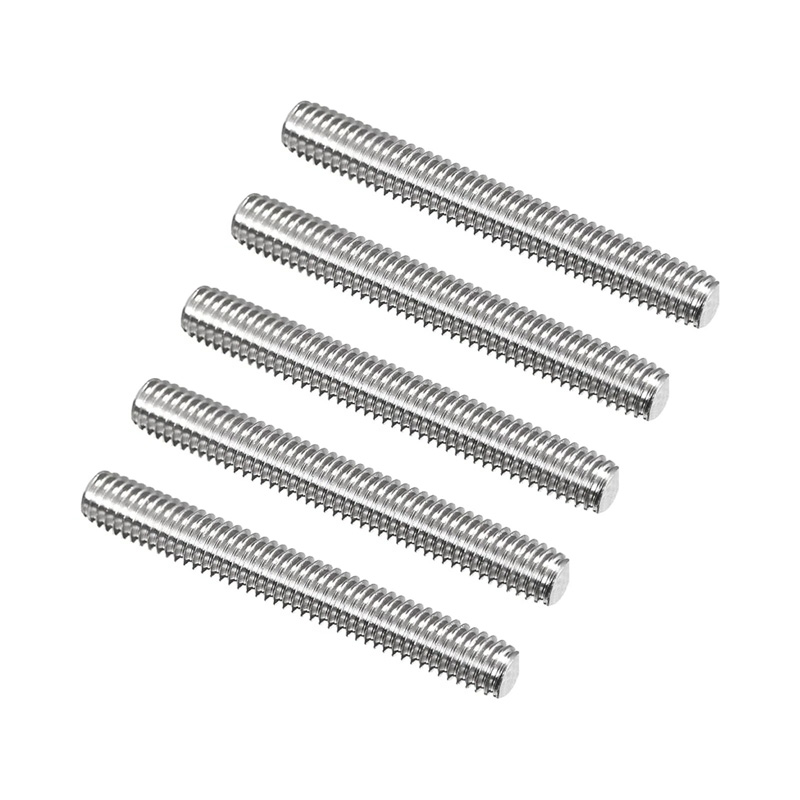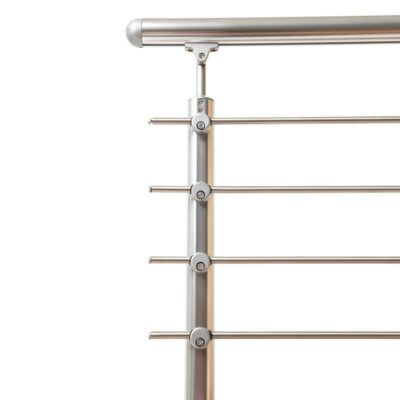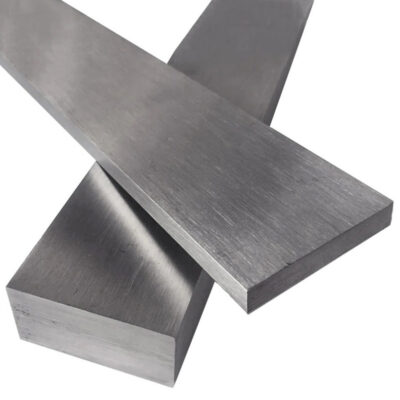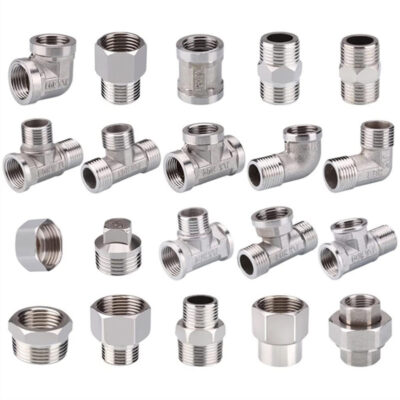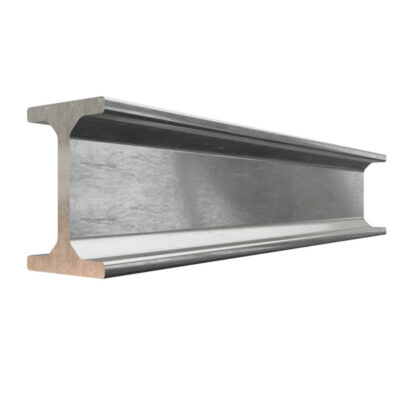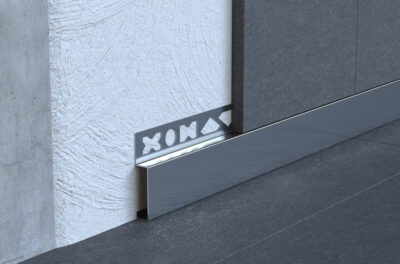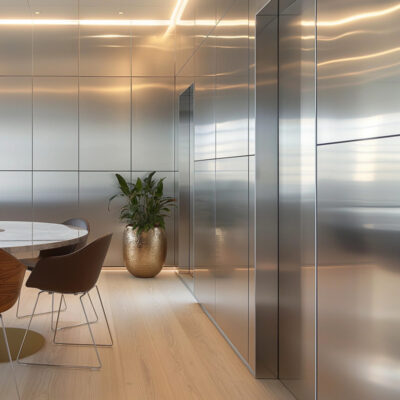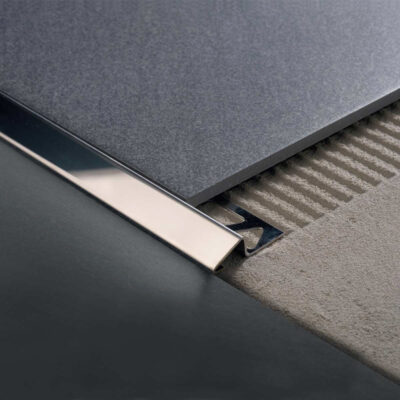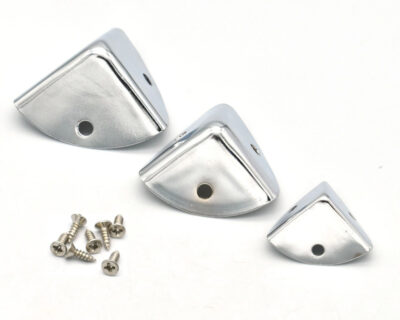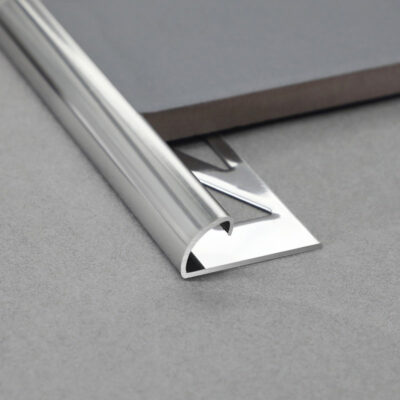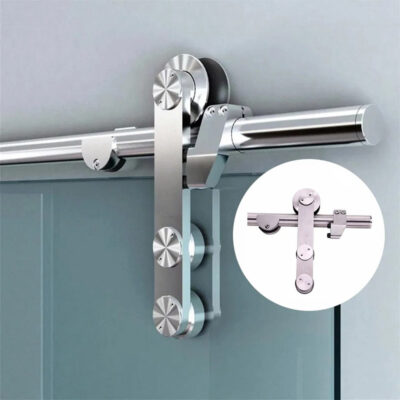Understanding Stainless Steel Threaded Rods
The first time I encountered a stainless steel threaded rod in a marine environment, I was skeptical about its ability to withstand constant salt spray. Six years later, that same installation remains intact with minimal signs of corrosion—a testament to the remarkable properties of this often-overlooked fastener.
Stainless steel threaded rods are fully-threaded metal rods manufactured from various grades of stainless steel alloys. Unlike standard threaded rods made from carbon steel, these fasteners incorporate chromium (at least 10.5%) and other elements like nickel and molybdenum that create a self-healing passive layer, providing exceptional resistance to corrosion and oxidation.
Their applications span numerous industries, from construction and manufacturing to marine engineering and food processing. You’ll find them securing heavy equipment, anchoring structures, providing tension in assemblies, and countless other applications requiring durable threaded connections in challenging environments.
What separates stainless steel threaded rods from their counterparts is their unique combination of mechanical strength and corrosion resistance. Unlike galvanized or zinc-plated alternatives, the corrosion protection isn’t merely a surface treatment—it’s inherent to the material itself. This means no degradation of protective coating over time and no compromised threads during installation.
E-Sang offers a comprehensive range of stainless steel threaded rods that meet or exceed industry standards, with options spanning multiple grades, diameters, and lengths to suit virtually any application.
The versatility of these fasteners stems from their exceptional balance of properties. They maintain structural integrity across a wide temperature range—from cryogenic applications to high-temperature environments exceeding 800°F (depending on grade). This temperature stability, combined with their non-magnetic properties (in austenitic grades) and resistance to many chemicals, makes them indispensable in specialized applications where other fasteners would quickly fail.
Types and Grades of Stainless Steel Threaded Rods
During a recent industrial consultation, a client asked me which stainless steel grade would be best for their chemical processing equipment. My answer surprised them: “It depends entirely on the specific chemicals, temperatures, and mechanical stresses involved.” This highlights the importance of understanding different stainless steel grades when selecting threaded rods.
The most commonly used grades for threaded rods include:
304/304L Stainless Steel: Often called the “workhorse” of the stainless steel family, this austenitic grade contains approximately 18% chromium and 8% nickel. It offers excellent corrosion resistance in most environments and good mechanical properties. I’ve specified 304 grade threaded rods for countless general-purpose applications where moderate corrosion resistance is required.
316/316L Stainless Steel: With the addition of 2-3% molybdenum, 316 grade provides superior corrosion resistance, particularly against chlorides and salt environments. Dr. Marina Cortes, a materials scientist I consulted with on a coastal infrastructure project, emphasized that “316 grade is practically mandatory for marine environments where salt spray is constant.” The “L” designation indicates low carbon content, which reduces the risk of sensitization during welding.
A2-70/A4-80: These designations follow the ISO 3506 standard, with A2 roughly equivalent to 304 and A4 to 316 grade. The numbers (70, 80) indicate tensile strength—70 means 700 MPa minimum tensile strength. When working in European markets, I’ve noticed these designations are more commonly used than the American AISI system.
410/430 Stainless Steel: These ferritic and martensitic grades offer moderate corrosion resistance with higher strength and magnetic properties. They’re less common for general-purpose threaded rods but serve specific applications where these properties are beneficial.
Let’s compare the key properties of these grades:
| Grade | Corrosion Resistance | Strength (MPa) | Ideal Environment | Temperature Range | Cost Factor |
|---|---|---|---|---|---|
| 304/304L | Good | 515-860 | General purpose, indoor/outdoor non-saline | -238°F to 1598°F | Baseline |
| 316/316L | Excellent | 515-860 | Marine, chemical, food processing | -238°F to 1598°F | +15-25% |
| 410 | Moderate | 480-690 | Low moisture, higher strength needs | Up to 1200°F | -5-10% |
| 430 | Moderate | 450-650 | Decorative, mild environments | Up to 1500°F | -10-15% |
| Duplex (2205) | Superior | 620-900 | Highly corrosive, high-stress | -50°F to 600°F | +30-40% |
When selecting the appropriate grade, consider:
- Environment: Evaluate exposure to corrosive elements like salt, chemicals, or acids
- Temperature: Both high and low-temperature extremes can affect performance
- Mechanical requirements: Tensile strength, yield strength, and fatigue resistance
- Regulatory requirements: Food-grade, nuclear, or other specialized certifications
- Budget constraints: Higher-performing grades generally command premium prices
An often-overlooked consideration is galvanic corrosion. During a manufacturing facility upgrade, I witnessed premature failure where stainless threaded rods were in direct contact with dissimilar metals in a wet environment. This accelerated corrosion could have been prevented with proper isolation techniques or material matching.
The thread specification is equally important. Unified National Coarse (UNC) and Unified National Fine (UNF) are common in North America, while metric threads prevail elsewhere. For specialized applications, Acme, Buttress, or other thread forms might be specified to address particular loading characteristics.
Technical Specifications and Standards
The technical requirements for stainless steel threaded rods extend far beyond simply choosing a material grade. Having spent countless hours calculating load requirements for industrial equipment installations, I’ve learned that understanding these specifications is crucial for ensuring safety and performance.
Thread specifications follow standardized systems. In the US, the Unified Thread Standard (UTS) dominates, with designations like 1/4″-20 (where 1/4″ is the nominal diameter and 20 indicates 20 threads per inch). Internationally, metric thread specifications like M10x1.5 are used (10mm diameter with 1.5mm thread pitch). These threads may be coarse or fine, with fine threads offering better tensile strength but potentially more vulnerability to galling—a form of adhesive wear that can seize stainless steel threads.
Professor Thomas Werner, a mechanical engineering specialist I consulted for a bridge support project, advises that “Thread class fit is often overlooked but critically important. A Class 2 fit provides standard tolerance for general applications, but precision assemblies might require Class 3, while Class 1 offers easier assembly in field conditions.”
Tensile strength is perhaps the most critical mechanical property. ASTM F593 serves as the primary standard for stainless steel threaded fasteners in North America, defining mechanical and material requirements. According to this standard, a 304 stainless steel threaded rod typically offers a minimum tensile strength of 70,000 PSI (482 MPa).
A comprehensive look at the technical standards governing these products:
| Standard | Description | Key Requirements | Applicability |
|---|---|---|---|
| ASTM F593 | Standard Specification for Stainless Steel Bolts, Hex Cap Screws, and Studs | Defines chemical composition, mechanical properties, and dimensions | North America; primary standard for SS threaded rod |
| ISO 3506 | Mechanical properties of corrosion-resistant stainless steel fasteners | Classifies fasteners by alloy group (A1-A5, F1, C1-C4) and strength class | International applications; widely used in Europe |
| ASTM A276 | Standard Specification for Stainless Steel Bars and Shapes | Material composition and physical properties of SS rod stock | Applicable to raw material used for manufacturing |
| DIN 976 | Threaded rods | Dimensional and tolerance specifications for metric threads | European markets; specifies tolerances and dimensions |
| ASME B1.1 | Unified Inch Screw Threads | Thread form, series, class, tolerance, and designation for inch-based threads | Critical for ensuring thread compatibility |
Load-bearing capacity varies significantly based on diameter, grade, and application factors. A 1/2″ 304 stainless steel threaded rod might safely handle around 4,000 pounds in tension, but this can be affected by:
- Thread engagement length
- Quality of mating components
- Temperature extremes
- Dynamic vs. static loading
- Cyclic fatigue considerations
- Corrosion effects over time
During an inspection of a failed overhead installation, I discovered that while the threaded rods themselves met specifications, inadequate thread engagement with the coupling nuts had compromised the entire assembly. This underscores the importance of considering the complete fastening system, not just the rod itself.
Surface finish also plays a role in performance. Most stainless threaded rods come with a natural “mill finish,” but operations requiring smoother surfaces or specific aesthetic requirements might necessitate additional finishing processes like polishing or passivation. Passivation, a chemical process that removes free iron from the surface and enhances the chromium-oxide layer, can significantly improve corrosion resistance.
For critical applications, material traceability and certification are essential. Many industries require certified material test reports (CMTRs) that verify chemical composition and mechanical properties of the specific batch. I’ve encountered situations where seemingly identical fasteners performed very differently because one was authentic certified material while the other was counterfeit—highlighting the importance of supplier qualification.
Installation Best Practices and Techniques
The afternoon I spent teaching a maintenance team how to properly install stainless steel threaded rods in a food processing facility revealed a common misconception: many believed that installation was simply a matter of “threading it in.” In reality, proper installation techniques not only ensure structural integrity but can dramatically extend service life.
Galling, sometimes called cold welding, represents the most common challenge when working with stainless steel threaded components. This phenomenon occurs when the protective oxide layers on mating stainless steel surfaces break down under pressure and friction, causing metal-to-metal contact that can seize the threads permanently. I’ve seen skilled contractors reduced to cutting rods after galling occurred during installation.
To prevent galling:
Use appropriate lubricants – Anti-seize compounds specifically formulated for stainless steel are essential. Traditional petroleum-based lubricants often prove insufficient. For food-grade applications, specialized NSF-approved anti-seize compounds are available.
Control installation speed – Slow, steady threading prevents heat buildup that contributes to galling. Power tools should be used at low speed or avoided altogether for final tightening.
Maintain alignment – Cross-threading dramatically increases galling risk. Ensure components are properly aligned before applying significant torque.
Consider thread rolling vs. cutting – Rolled threads generally have better surface finish and resistance to galling than cut threads.
When securing stainless steel threaded rods in concrete or masonry, chemical anchoring systems often provide superior results to mechanical expansion anchors. “The distributed load transfer of chemical anchors reduces stress concentration and better accommodates the different thermal expansion properties of stainless steel and concrete,” explains structural engineer Kayla Terrence, whom I consulted during a historic building renovation project.
Proper tool selection also impacts installation success. Non-marring tools prevent surface damage that could initiate corrosion sites. For longer rods, thread protection caps prove invaluable during handling and positioning to prevent thread damage that could complicate assembly or compromise joint integrity.
Torque specifications deserve careful attention. Unlike with carbon steel fasteners, stainless steel threaded rods generally require lower installation torque values due to their different frictional characteristics and lower yield strengths. Over-torquing can stretch or damage threads, reducing load capacity. For critical applications, I recommend using calibrated torque wrenches and documenting installation values.
A particularly challenging installation I oversaw involved a vertical array of 316 stainless threaded rods in an aggressive chemical environment. We discovered that the standard wrenches caused surface marring that later developed into corrosion sites. Switching to padded jaw wrenches eliminated the problem entirely.
For longer installations, addressing thermal expansion becomes crucial. Stainless steel has a relatively high coefficient of thermal expansion (approximately 9.6 × 10^-6 in/in/°F for 304 stainless), which means a 10-foot rod could expand by approximately 1/8 inch with a 100°F temperature change. In applications with significant temperature fluctuations, accommodation for this movement through expansion joints or flexible connections prevents buckling or joint failure.
Electrical considerations also warrant attention in certain installations. While stainless steel has lower electrical conductivity than carbon steel, it remains conductive. In applications where electrical isolation is required, non-conductive washers or sleeves should be incorporated into the assembly.
Documentation often gets overlooked, but recording installation details (torque values, anti-seize compound used, installation date, batch numbers) provides valuable reference information for maintenance and future replacements. During a recent infrastructure assessment, having access to the original installation documentation helped identify potential weaknesses before they led to failures.
Maintenance and Corrosion Resistance
Standing at a coastal bridge inspection last year, I was struck by the stark contrast between two adjacent installations from different decades. The newer section, utilizing 316 stainless steel threaded rods, remained virtually pristine despite five years of salt spray exposure. The older section, with inadequately specified fasteners, displayed significant deterioration requiring costly remediation.
While corrosion resistance represents one of the primary advantages of stainless steel threaded rods, this property isn’t absolute and varies significantly based on multiple factors. Understanding these variables helps maximize service life and maintain structural integrity.
The passive chromium oxide layer that forms naturally on stainless steel surfaces provides its inherent corrosion protection. However, this layer can be compromised by:
- Surface contamination (particularly iron particles)
- Chloride exposure (salt environments)
- Oxygen-depleted environments
- Certain chemicals and acids
- Mechanical damage
Maintenance strategies should focus on preserving this protective layer. In mild environments, stainless steel threaded rods may require minimal maintenance beyond occasional inspection. However, more aggressive conditions necessitate proactive approaches.
Regular cleaning removes surface contaminants that might initiate corrosion. For accessible installations, periodic washing with mild detergent and water followed by thorough rinsing helps maintain corrosion resistance. In more demanding environments, specialized stainless steel cleaners containing citric or phosphoric acid can remove minor surface contamination and restore the passive layer.
Dr. Elaine Hutchins, a corrosion specialist whose research I’ve followed for years, emphasizes that “the worst environments for stainless steel are not necessarily those with direct exposure to elements, but rather creviced areas where moisture and contaminants can accumulate without being washed away by rain.” This insight suggests focusing maintenance attention on sheltered areas and joints where threaded rods interface with other components.
Environmental factors dramatically impact maintenance requirements:
| Environment | Corrosion Risk | Recommended Grade | Maintenance Frequency | Special Considerations |
|---|---|---|---|---|
| Indoor, climate-controlled | Very Low | 304/A2 | Annual inspection | Watch for cleaning chemical compatibility |
| Outdoor, non-coastal | Low | 304/A2 | Bi-annual inspection | More frequent in industrial/polluted areas |
| Coastal/Marine | High | 316/A4 or higher | Quarterly inspection and cleaning | Salt removal critical; consider protective coatings |
| Chemical Processing | Variable | Application-specific | Monthly to quarterly | Chemical-specific compatibility testing advised |
| Food Processing | Moderate | 316/A4 | As per sanitation schedule | Sanitizer compatibility; avoid crevices |
| Underground/Submerged | Severe | Duplex or Super Duplex | Difficult; design for minimal maintenance | Cathodic protection may be beneficial |
An often-overlooked maintenance consideration is the inspection of mating components. A carbon steel nut on a stainless steel threaded rod creates both a galvanic corrosion risk and a weak point in the assembly. During a manufacturing facility audit, I identified numerous instances where inappropriate material pairings accelerated corrosion, despite high-quality stainless components.
For particularly demanding environments, supplementary protection may be warranted. Specialized protective coatings compatible with stainless steel can provide an additional barrier against aggressive chemicals or extreme conditions. I’ve successfully used PTFE-based coatings in chemical processing applications where even 316 stainless would eventually succumb to attack.
In permanently installed applications, periodic tension verification ensures that thermal cycling or vibration hasn’t loosened connections. Non-destructive testing methods can identify potential issues before failure occurs.
Worth noting is that different stainless steel grades exhibit varying behavior in specific corrosive environments. While 316 stainless contains molybdenum specifically to resist chloride attack, it may not outperform 304 in certain acid environments. This underscores the importance of material selection based on the specific corrosive challenges present.
For threaded rod installations not easily accessible for regular maintenance, considering the entire life cycle during design and specification becomes crucial. In a water treatment facility project, we deliberately oversized stainless steel threaded rods in critical areas, providing a corrosion allowance that would maintain required structural integrity even with some material loss over decades of service.
Cost Considerations and ROI
The initial sticker shock often experienced when comparing stainless steel threaded rod prices to carbon steel alternatives can lead to short-sighted decisions that ultimately prove more expensive. Having guided numerous facility managers through cost justification for material upgrades, I’ve developed a nuanced approach to evaluating the true financial implications.
A straightforward price comparison reveals stainless steel threaded rods typically cost 3-5 times more than their carbon steel equivalents. A standard 3/8″-16 thread, 3-foot carbon steel rod might cost $6-8, while the 304 stainless steel version costs $25-30, and the 316 grade approaches $40. However, this surface-level comparison misses critical factors that influence total ownership cost.
Installation costs often favor stainless steel. During a recent manufacturing line installation, we calculated that the labor cost to replace corroded carbon steel threaded rods in difficult-access locations would exceed the entire material cost difference within just two years. The durability of stainless steel eliminated these replacement cycles entirely.
Operational disruption represents another hidden cost. A process engineer at a food processing plant shared with me that a single unplanned shutdown due to fastener failure cost them over $30,000 in lost production—more than the cost difference for upgrading every threaded rod in their facility to 316 stainless steel.
The calculation becomes more complex when factoring in:
- Installation labor – Higher material costs often represent a small percentage of total installed cost
- Maintenance requirements – Reduced inspection and maintenance frequency
- Replacement frequency – Extended service life, particularly in corrosive environments
- Downtime costs – Avoided production interruptions
- Safety implications – Reduced risk of structural failures
- Contamination risks – Particularly important in food, pharmaceutical, and semiconductor industries
For a more sophisticated analysis, consider these factors across different materials:
| Factor | Carbon Steel | Galvanized Steel | 304 Stainless | 316 Stainless |
|---|---|---|---|---|
| Initial cost (relative) | 1x | 1.5-2x | 3-5x | 4-6x |
| Expected service life (general environment) | 5-10 years | 15-25 years | 30+ years | 50+ years |
| Expected service life (corrosive environment) | 1-3 years | 5-8 years | 10-15 years | 20-30 years |
| Maintenance requirement | High | Moderate | Low | Very Low |
| Replacement labor cost | 100% each cycle | 100% each cycle | 100% once | 100% once |
| Typical annual maintenance cost | 5-10% of initial | 2-5% of initial | <1% of initial | <0.5% of initial |
A practical approach I’ve used with clients is calculating the “crossover point” where stainless steel becomes more economical. In a moderately corrosive industrial environment, this often occurs between 7-10 years, well within the expected operational life of most facilities.
Environmental regulations add another dimension to cost considerations. Increasingly stringent regulations around zinc and other coating materials can add disposal costs for galvanized fasteners, while stainless steel remains highly recyclable with significant scrap value.
Tax implications may also favor premium materials through depreciation schedules and maintenance expense deductions. A financial controller I worked with identified significant differences in how capital investments in higher-quality materials could be leveraged for tax advantages compared to ongoing maintenance expenses.
The calculation becomes particularly compelling when engineering critical safety systems. As a project manager told me during a water treatment facility upgrade, “When I factor in the liability and insurance implications of a potential failure, stainless steel isn’t just cheaper in the long run—it’s the only responsible choice.”
A balanced approach recognizes that not every application justifies premium materials. For temporary structures, non-critical applications, or situations where regular inspection and maintenance are part of existing protocols, carbon steel options may remain financially prudent. The key lies in making these decisions deliberately, with full awareness of lifecycle implications, rather than reflexively choosing the lowest initial cost.
Environmental Considerations and Sustainability
Walking through a metal recycling facility last month, I noticed something striking—containers of stainless steel fasteners and threaded rods set aside for premium processing. The facility manager explained, “These aren’t waste; they’re valuable resources we can recycle indefinitely without quality loss.” This observation perfectly encapsulates the sustainability advantage of stainless steel threaded rods.
The environmental profile of stainless steel threaded rods presents an interesting paradox. Their production requires significant energy and resources, yet their longevity and recyclability often make them the more sustainable choice when assessed across their entire lifecycle.
Stainless steel’s primary environmental advantages include:
- Exceptional longevity – Reducing replacement frequency and associated resource consumption
- Complete recyclability – 100% recyclable without quality degradation
- High recycled content – Typically containing 60-85% recycled material
- Minimal maintenance – Reducing chemical cleaner usage and maintenance-related emissions
- No toxic coatings – Unlike some plated or coated alternatives
The production phase admittedly represents the environmental weak point. Manufacturing stainless steel requires approximately 50% more energy than carbon steel production. However, this energy investment pays dividends through extended service life. Environmental scientist Dr. Julian Meyers notes that “the carbon footprint of a stainless steel threaded rod amortized over its useful life is typically lower than alternatives requiring replacement, even accounting for higher manufacturing impacts.”
The recycling efficiency for stainless steel approaches 85% globally, with the material retaining its value through multiple recycling cycles. This creates a robust recycling infrastructure and economic incentive for recovery. The chromium, nickel, and molybdenum content makes stainless steel scrap particularly valuable, ensuring high recapture rates even from demolition waste.
An often-overlooked environmental benefit involves chemical usage. Traditional threaded rods may require regular application of protective coatings, lubricants, or cleaners containing volatile organic compounds (VOCs) or other environmentally problematic substances. The natural corrosion resistance of stainless steel eliminates or greatly reduces these chemical requirements.
For organizations pursuing green building certifications like LEED or BREEAM, stainless steel fasteners can contribute to several credit categories:
- Materials and Resources credits for recycled content
- Indoor Environmental Quality credits for low-emitting materials
- Regional Materials credits when sourced within specified distances
- Durability and design for longevity credits
The manufacturing landscape for stainless steel threaded rods continues to evolve toward greater sustainability. Visiting a modern production facility in Sweden last year, I observed several initiatives reducing environmental impact:
- Electric arc furnaces powered by renewable energy
- Closed-loop water systems eliminating wastewater discharge
- Heat recovery systems capturing and repurposing process heat
- Advanced filtration reducing particulate emissions by over 99%
- Computer-optimized production minimizing material waste
These advancements are gradually reducing the environmental footprint of production, further improving lifecycle sustainability.
Worth acknowledging are the mining impacts associated with stainless steel alloying elements, particularly nickel and chromium. These present genuine environmental challenges, though the high recycling rate means a significant portion of these materials remain in circulation rather than requiring new extraction.
For projects with stringent environmental requirements, I’ve found success specifying threaded rods with verified environmental product declarations (EPDs) that quantify impacts across multiple categories. These provide transparency and accountability throughout the supply chain.
The durability advantage becomes most apparent in harsh environments. A marine engineer colleague described replacing carbon steel threaded rods every 18-24 months on dock installations, while 316 stainless installations have remained serviceable for over 25 years—representing more than a 12-fold reduction in material consumption and associated environmental impacts.
Future Trends in Stainless Steel Threaded Rod Technology
At a recent materials science symposium, I was fascinated by a presentation on nitrogen-enhanced stainless steel alloys promising twice the strength with equivalent corrosion resistance. This glimpse into emerging technologies highlighted how even seemingly mature products like stainless steel threaded rods continue to evolve through innovation.
Several converging trends are reshaping the landscape for these essential fasteners:
Advanced Alloy Development: Traditional stainless steel grades are being supplemented by new formulations tailored to specific performance profiles. Lean duplex stainless steels reduce expensive nickel content while maintaining excellent properties. Super austenitic grades push corrosion resistance to new extremes for the most demanding environments. As metallurgist Dr. Vincent Kobayashi explained during our discussion, “The line between specialty alloys and stainless steels is blurring, creating intermediate options optimized for specific performance criteria.”
Manufacturing Process Innovations: The production of threaded rods is becoming more sophisticated. Advanced thread rolling techniques produce superior surface finishes with enhanced fatigue resistance. Cold working processes are being refined to increase strength without sacrificing corrosion resistance. I recently toured a facility using computer-controlled induction heating to create precisely customized mechanical properties along different sections of the same rod—harder threads with a more ductile core, for example.
Surface Engineering Breakthroughs: Rather than relying solely on the inherent properties of stainless steel, advanced surface treatments are enhancing performance. Plasma nitriding creates extraordinarily hard surfaces while maintaining corrosion resistance. Laser surface modification can produce customized surface characteristics. Specialized passivation techniques develop deeper, more protective oxide layers. These treatments expand the performance envelope without requiring more expensive base materials.
Digital Integration and Traceability: The humble threaded rod is joining the digital ecosystem. RFID and direct part marking technologies enable complete traceability throughout service life. This documentation becomes particularly valuable for critical applications where material verification and maintenance history are essential. During a recent infrastructure assessment, we utilized digital records to identify specific batches of threaded rods requiring inspection based on manufacturing date and material source.
Application-Specific Optimization: The one-size-fits-all approach is giving way to highly customized solutions. Threaded rods with variable pitch along their length provide optimal performance under complex loading. Hybrid fasteners with different materials or properties in different regions address specific challenges. Composite stainless fasteners incorporating fiber reinforcement or ceramic elements deliver performance profiles impossible with homogeneous materials.
Sustainability Innovations: Environmental considerations are driving development of stainless steel fasteners with higher recycled content and lower embodied energy. The industry is gradually shifting toward leaner alloy designs that maintain performance while reducing dependence on elements with problematic supply chains. Manufacturing processes are evolving to reduce environmental impact through energy efficiency, waste reduction, and elimination of hazardous processes.
Standardization and Certification Evolution: International standards bodies are developing more sophisticated specifications that address not just dimensions and basic properties but also performance characteristics in specific environments. This enables more precise material selection and application-appropriate specifications. Certification programs now include environmental impact declarations and sustainability metrics alongside traditional quality and performance parameters.
Integration with Engineered Systems: Stainless steel threaded rods are increasingly designed as integral components of larger engineered systems rather than generic fasteners. This systems approach optimizes the interaction between the fastener and surrounding materials, addressing issues like thermal expansion compatibility, galvanic corrosion prevention, and load distribution. A bridge engineer I collaborated with recently developed a specification for threaded rods precisely matched to the thermal expansion coefficient of the composite structural elements they secured.
The market dynamics for these products are evolving as well. Global supply chain disruptions have emphasized the importance of material availability and price stability. Some manufacturers are responding by developing alloys less dependent on volatile elements like nickel. Others focus on regional production capabilities to reduce logistics vulnerabilities.
What hasn’t changed is the fundamental importance of these components. As an engineering professor summarized during a recent panel discussion, “We can design increasingly sophisticated structures and systems, but their reliability ultimately depends on the humble fasteners holding everything together. Advanced threaded rod technology may not make headlines, but it enables countless innovations that do.”
These trends collectively point toward more specialized, higher-performing stainless steel threaded rods tailored to specific application requirements—a welcome evolution that provides engineers and contractors with better tools to address increasingly demanding fastening challenges.
Choosing the Right Stainless Steel Threaded Rods for Your Application
After spending weeks troubleshooting premature fastener failures at a coastal processing facility, I realized the problem wasn’t defective materials but rather inappropriate specification. The facility had used 304 stainless steel threaded rods in a chloride-rich environment where only 316 or higher would suffice. This expensive lesson underscored the importance of proper selection criteria.
Selecting the optimal stainless steel threaded rod involves balancing multiple factors beyond simply choosing a grade. This systematic approach has served me well across diverse projects:
First, thoroughly assess the operating environment. Consider:
- Temperature extremes and fluctuations
- Chemical exposure (acids, bases, chlorides, etc.)
- Atmospheric conditions (humidity, salt spray, pollutants)
- UV exposure
- Oxygen availability (particularly in submerged applications)
- Biological factors (microbial influenced corrosion)
Next, define the mechanical requirements:
- Static load characteristics
- Dynamic or cyclic loading
- Vibration exposure
- Thread engagement length
- Tensile, shear, and bending forces
- Safety factors appropriate to the application
Regulatory and compatibility considerations often constrain options:
- Food safety requirements (FDA, NSF, etc.)
- Magnetic property restrictions (MRI environments, electronic manufacturing)
- Electrical conductivity requirements
- Thermal expansion compatibility with joined materials
- Galvanic compatibility with adjacent components
Budget realities invariably influence decisions. Consider:
- Initial material cost
- Installation labor and specialty tool requirements
- Expected service life and replacement frequency
- Maintenance requirements and associated costs
- Consequence and cost of potential failure
For critical applications, I recommend material testing in the actual operating environment whenever possible. Laboratory corrosion data provides guidance but may not perfectly predict performance in complex real-world conditions.
When navigating these considerations, common application-specific recommendations emerge:
General Construction (Non-Critical):
304/A2 stainless typically provides adequate performance for general construction applications away from coastal areas or aggressive environments. Its cost-effectiveness and availability make it the default choice when specific challenges aren’t present.
Marine and Coastal Applications:
316/A4 stainless becomes the minimum recommendation for salt exposure. In splash zones or direct seawater contact, consider super austenitic grades (904L) or duplex stainless (2205). During a marina reconstruction project in Florida, we found that even 316 showed signs of crevice corrosion after five years in the splash zone
Frequently Asked Questions about Stainless Steel Threaded Rods
Q: What are Stainless Steel Threaded Rods?
A: Stainless Steel Threaded Rods are rods made from stainless steel, characterized by continuous threading along their entire length. They provide excellent corrosion resistance, strength, and durability, making them highly versatile in various applications, including construction, electrical, and marine industries. Their threading allows for easy customization and connection with nuts and other fasteners.
Q: What are the main benefits of using Stainless Steel Threaded Rods?
A: The primary benefits of Stainless Steel Threaded Rods include their high corrosion resistance, which is ideal for harsh environments; their strength and durability to handle significant loads; and their ease of cleaning, which is advantageous in visible applications. Additionally, they offer flexibility in terms of length and can be cut to fit specific requirements.
Q: In what industries are Stainless Steel Threaded Rods commonly used?
A: Stainless Steel Threaded Rods are commonly used in industries such as:
- Construction: For structural supports and building frameworks.
- Electrical: In mounting electrical components and equipment.
- Marine: In marine environments where corrosion resistance is crucial.
- Manufacturing: For securing parts in machinery and equipment.
Q: How can Stainless Steel Threaded Rods be customized or modified?
A: Stainless Steel Threaded Rods can be customized or modified through cutting or bending. They can be cut using a hacksaw or angle grinder to fit specific lengths. For bending, a bench vice with a torch is used to heat the rod until it is pliable, allowing for precise shaping without compromising the material’s strength.
Q: What types of materials are typically used for threaded rods?
A: Threaded rods can be made from various materials, each offering different properties:
- Stainless Steel: Provides excellent corrosion resistance and durability.
- Steel: Offers high strength and is commonly used in structural applications.
- Brass and Aluminum: Used in lighter-duty applications where corrosion resistance is not as critical.
Q: Can Stainless Steel Threaded Rods be used outdoors?
A: Yes, Stainless Steel Threaded Rods are highly suitable for outdoor use due to their excellent corrosion resistance. They can withstand harsh weather conditions and are particularly beneficial in saltwater marine environments, although 316 stainless steel may offer better resistance in severe marine or chemical environments.

